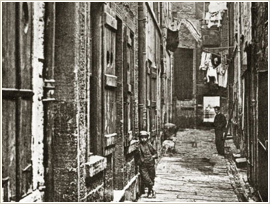Life expectancy back then
A while ago in another blog entry I discussed the causes of death of various ancestors. A couple of articles I have read recently mention some facts which might be worth adding to the pot. We have seen from our ancestors’ families that children are born every couple of years or so – and if there is a lengthy gap between siblings, then probably an infant has died. Medical evidence is clear: if a woman conceives within 18 months of bearing a child, the chances of miscarriage or still birth, low birth weight, infant death and stunted physical development are much increased. Spacing births improves child health. So this might account for some of the causes of death in families. However, we have also seen that some parents, fathers in particular, are quite old when they have their last children. It would appear, though, from recent research in Iceland that a father’s age has a dramatic effect on his offspring and the older he is then the greater-than-average risk of genetic disease in his children – caused mainly by mutations. Older fathers have previously also been linked to higher rates of schizophrenia and autism in their children - though these presumably do not show up as a cause of death.
Although our more recent Raitt ancestors were from Angus, especially the Arbroath area, my great-grandfather’s children moved to Glasgow, Lanarkshire around 1900. In another recent article in The Economist (25 August 2012, p23-24) there is a discussion about how Glaswegians die younger than any other Britons and nobody knows why. Up until 1950 Glasgow did not stand out as particularly sickly, but a gap opened during 1950-1980 between it and other UK cities. After 1980 the gap widened further – even adjusting for poverty, age and gender Glasgow had over twice as many deaths from drink and drugs (not to mention suicides, traffic accidents and violence) particularly in the age group 15-44 as Liverpool and Manchester. Various theories for causes have been put forward, such as multi-generational patterns of bad behaviour that get passed from parent to child, and the effects of deindustrialization which often include a decline in health as well as unemployment. However, life expectancy at birth in 1840, when following the sudden industrial revolution in the 19th century rapid urbanization crammed workers into unsanitary housing in cities thus forcing men to sit in the pub (and drink) because there was no place at home, was just 27 years old – a full 20 years lower than Aberdeen.
In fact, Scotland's population growth rate was slower than elsewhere in the British Isles despite the fact that people were beginning to live longer. This is generally attributed to the facts that in the eighteenth century Scottish women married later than did their English and Irish counterparts, and a larger proportion apparently never married during their childbearing years (both facts are borne out by the records of our ancestors.) Life expectancy at the age of twenty-five years rose from twenty-eight years in the early seventeenth century to thirty-eight years by the end of the eighteenth century. Apart from low fertility and high mortality, the other reason for a lower birth rate was substantial emigration, this usually of young men for military or sea-faring (merchant) activities. However, as the above explanation reveals, the rapid onset of industrialization had a devastating effect on life expectancy, particularly in the large cities as opposed to rural areas where life and conditions were still very harsh, but not as bad as the cramped main cities.
Friday, 31 August 2012

